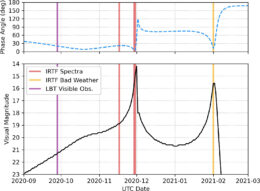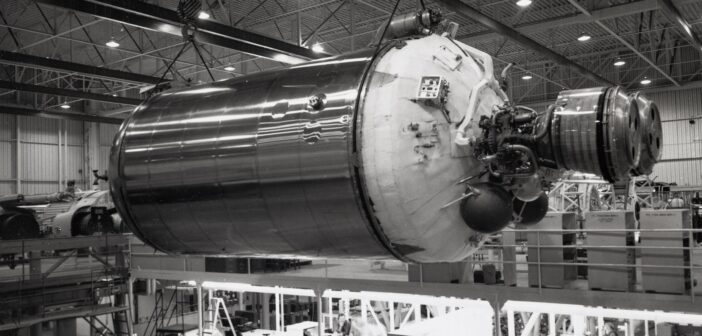Upcoming surveys will find dozens of near-Earth objects each night, but some of those objects will be space junk rather than asteroids. How will we tell the difference?
Masquerading as Asteroids
When humankind sent its first rocket toward the Moon 65 years ago, it marked the beginning of a long era of lunar exploration. Now, the cast-off rocket parts from decades of lunar missions are cropping up in an unexpected place: searches for near-Earth asteroids.

Phase angle (top) and light curve (bottom) of an artificial object mistaken for an asteroid. [Battle et al. 2024]
One Person’s Space Junk Is Another’s Research Opportunity
In 2020, a planetary defense survey discovered a candidate near-Earth object named 2020 SO. Later, dynamical studies suggested that rather than being an asteroid, 2020 SO is instead a discarded Centaur-D rocket body from NASA’s Surveyor 2 mission to the Moon. 2020 SO’s orbit is unusual for a natural object, and while it’s large, roughly 10 meters by 3 meters, it’s lightweight enough that just the gentle pressure of the Sun’s radiation can push it off course.

Reflectance spectrum of 2020 SO (black) compared to those of two types of asteroids (green and blue). The spectra are normalized at 0.7 μm. [Battle et al. 2024]
Conversely, it’s close in color to three known Centaur-D rocket bodies in Earth orbit, although the colors don’t match perfectly. This suggests that if 2020 SO is also a Centaur-D rocket body, its surface has changed after decades of space aging from radiation and particle impacts.
Spectroscopy Has the Last Word
While it’s possible for artificial objects to be similar in color and reflectance to asteroids, spectroscopy lays their differences bare by revealing what they’re made of. A Centaur-D rocket body is largely covered in stainless steel and a polymer called polyvinyl fluoride, and its spectrum likely contains features from both materials. Using data from the Infrared Telescope Facility, Battle and coauthors compared the spectrum of 2020 SO to the spectrum of a known Centaur-D rocket as well as laboratory spectra of stainless steel and polyvinyl fluoride.
The spectrum of 2020 SO is similar in shape to the spectrum of stainless steel, and 2020 SO sports a distinct absorption feature at 2.3 microns (1 micron = 10-6 meter), just like the spectrum of polyvinyl fluoride. Taken together, 2020 SO’s area-to-mass ratio, color, and spectrum all point to the object being a rocket body rather than an asteroid.This study shows that photometry and infrared spectroscopy can reveal the colors and spectral features necessary to identify near-Earth objects. To take the identification of artificial objects a step further, future work may require a database of artificial-object spectra and laboratory studies of common spacecraft materials.
Citation
“Challenges in Identifying Artificial Objects in the Near-Earth Object Population: Spectral Characterization of 2020 SO,” Adam Battle et al 2024 Planet. Sci. J. 5 96. doi:10.3847/PSJ/ad3078


